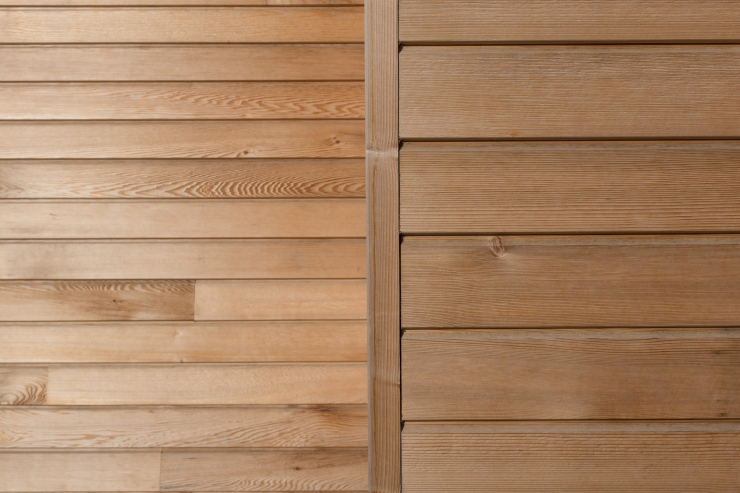Cedar is one of the best-known timber species for cladding in the UK, and a go-to for many architects and builders. At EcoChoice, it is frequently on our list of recommended species, too. Whether you are looking into cladding for a garden shed or to protect the exterior of a large commercial building, cedar could be exactly what you are seeking.
UK and Canadian-Grown Cedar
The Cedar tree used in cladding (Thuja plicata) grows in many different regions of the world. Where we source your timber can affect its characteristics, with local climate and soil conditions changing the colour, knot content and durability.
The two types of Cedar we source for cladding are Canadian Western Red Cedar and British-grown Cedar.
Canadian Western Red Cedar
Canadian Western Red Cedar is the largest tree in the Cedar family, with the biggest growing up to 75 metres tall. The timber itself is darker than other varieties with a beautiful colour variation and a characteristically red hue (hence the name!). It also has fewer knots and is incredibly dense, making it super durable.
Interestingly enough, Canada also grows White Cedar trees. These are very light in colour, and are not quite as popular as Red Cedar.
British Cedar
Cedar trees which grow in the UK are noticeably lighter in colour than Canadian Western Red Cedar, with more of a creamy colour to the timber with dark brown streaks. British Cedar has more knots and is less dense than Canadian Western Red Cedar, and therefore not quite as durable. Canadian WRC is obviously more expensive, but you get a timber that is more durable and has less knots.
Why Choose Cedar?
One of the main reasons Cedar cladding is so popular is because of its durability. Cedar is incredibly stable and offers wonderful resistance to rot and infestation, even when left untreated. The low levels of resin within the wood also allow for excellent staining and treatment options if required.
Lightweight, sturdy and undeniably beautiful, Cedar always makes a good choice for cladding. If you are looking for an easy option to clad your building, we would always suggest looking into Cedar.
Cedar from EcoChoice
EcoChoice delivers both Canadian and British Cedar cladding in a range of profiles, including shiplap, tongue-and-groove and feather edge. Working within your schedule, we will source and deliver your Cedar timber straight to your project’s site. If necessary, the Canadian Cedar cladding boards can be delivered pre-stained or fire-treated to Euro Class B (class 0).
Standard sizes tend to be 19x90, 19x115, 19x140 and 19x190mm, though we can source more unique sizes if needed.
Sustainable Cedar Cladding
At EcoChoice, we always focus on sourcing your timber sustainably. When you choose EcoChoice Cedar cladding, you will be choosing FSC-certified, responsibly sourced timber which supports local environments and protects native species. Your cladding will be actively helping to save our planet’s forests and woodland, as well as the communities who live in and around them.
Find Your Cedar Cladding Match
If you have got your heart set on Cedar cladding or would like to know more about your options, reach out to our timber experts. We can tell you more about the profiles and treatments available, and hear more about your project to ensure we match you with the right timber species.




